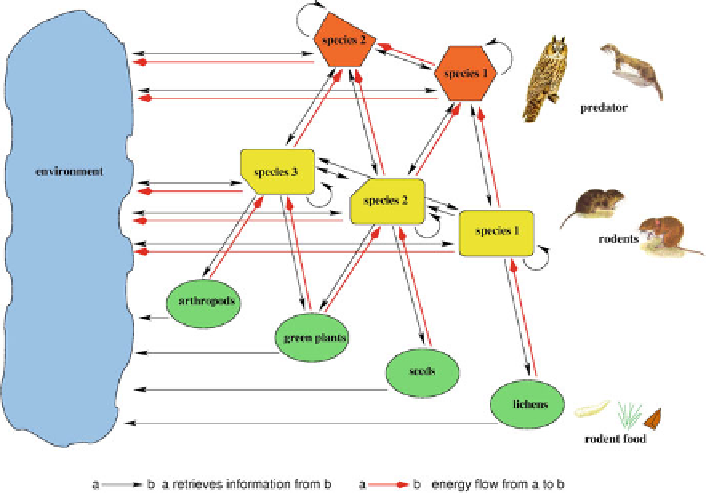Environmental Engineering Reference
In-Depth Information
entirely known. Especially restricting in this context are the inherent limitations
of field work in relation to the temporal and spatial extent of the investigated
phenomenon.
In order to analyze large-scale effects that result from complex interactions in
variable cause-effect networks, an individual-based model was developed (Reuter
2005). The model allowed integrating the most essential components and their
interaction structure on different integration levels. It represents small mammals'
communities as a food web which is composed of three trophic levels: (1) rodent
food, (2) rodents and (3) predators (Fig.
12.4
). Rodents and predators were
described as individual organisms with a detailed life history including an activity
repertoire and physiological processes. The modelled organisms interact in an
environment with a spatial arrangement of habitats under seasonally changing
conditions. This concept extended previous differential equation based modelling
approaches (Hanski and Korpim
aki 1995; Turchin and Hanski 2001) by integrating
most aspects from the ongoing debate that are relevant for rodent population
dynamics.
Simulations with the model allow covering different scenarios with respect to
the environment and the parameterized species. The investigated scenario included
the parameterization for two rodent species, field vole (
Microtus agrestis
) and bank
vole (
Clethrionomys glareolus
), and two predator species, the least weasel and the
€
Fig. 12.4 The components and actors of the rodent cycle model: Predators (least weasel,
Mustela
nivalis
and long-eared owl,
Asio otus
) and rodents (field vole,
Microtus agrestis
and bank vole,
Clethrionomys glareolus
) are represented as individual objects. The environment is represented as
a grid-map which also contains the food resources for the rodents (adapted from Reuter 2005)

